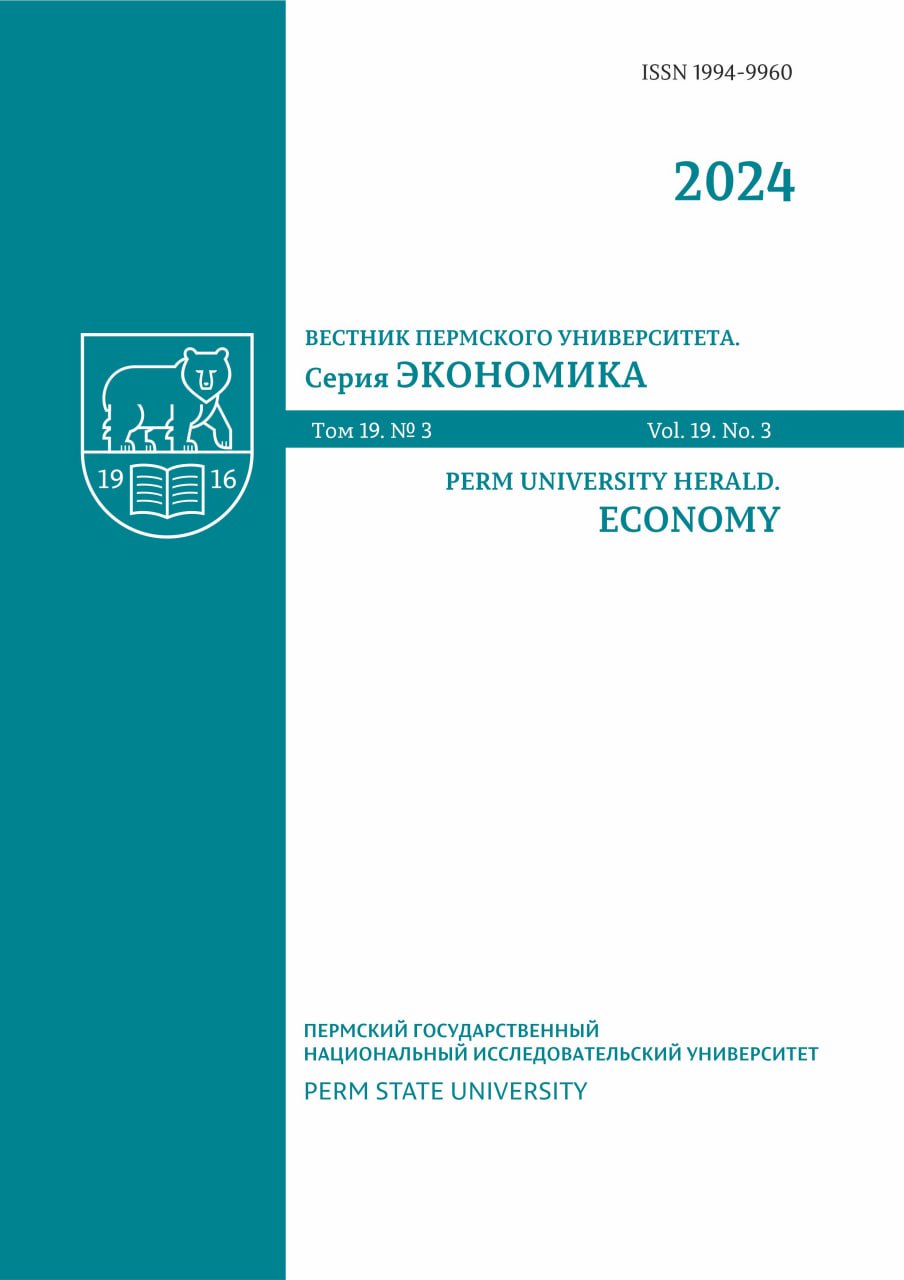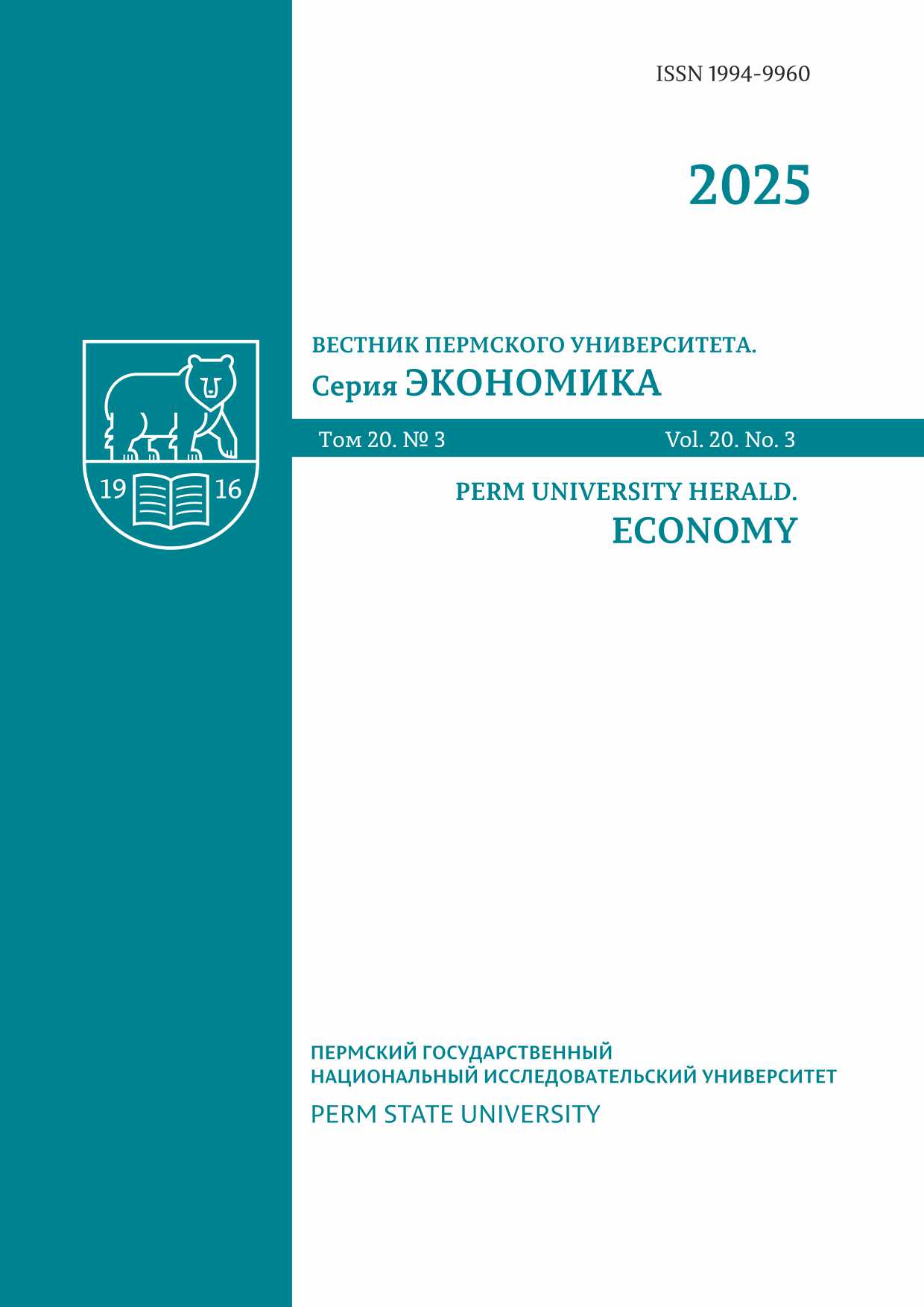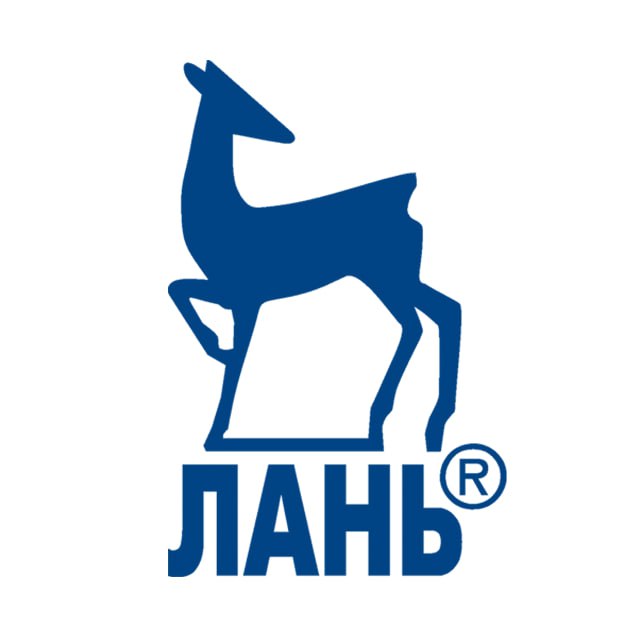A multicriteria assessment methodology for potential priorities of regional structural policy in the epoch of new industrialization
DOI:
https://doi.org/10.17072/1994-9960-2025-3-288-309Abstract
Introduction. Regional economic realities increasingly diverge from national trends in the contemporary global landscape. This amplifies the significance of regional development and structural policy. Effective stewardship of economic resources and the definition of regional policy priorities in the era of new industrialization call for a comprehensive approach underpinned by detailed analysis.
Purpose. This study aims to develop and implement a multi-criteria methodology to assess potential priorities of regional structural policy in the epoch of new industrialization.
Materials and Methods. The research refers to the 2016–2023 official statistical data from the Federal State Statistics Service and its Samara branch. The current structure of Samara’s economy was compared with the target model complied with the requirements of new industrialization. This helped the authors develop a methodology comprising three stages: 1) BCG matrix analysis to categorize industries by their growth rates (2016–2023) and contribution to the gross regional product; 2) grouping of industrial products by their technological processing stages (low, medium, high) under the approach of the Russian Export Center; and 3) a multi-criteria evaluation of some indicators characterizing the economic activities of Samara region and categorized into economic, resource-infrastructural, and innovation-technological groups.
Results. The BCG analysis revealed that mining and manufacturing are the key sectors. Samara region was shown to have the following structural imbalances: dominance of the raw materials sector, low processing depth, and the concentration of investment in traditional industries coupled with insufficient funding for high-tech sectors. The multi-criteria assessment highlighted leading sectors: manufacturing, trade, transport, mining, and communications.
Conclusions. The study concludes that structural policy should be reframed toward technological modernization, institutional support for innovation, and infrastructural synchronization. The proposed methodology facilitates the diagnosis of imbalances and ranks policy instruments, which can inform the development of regional development strategies in the context of new industrialization.
Keywords: region, structural policy, sectoral structure, multicriteria assessment, new industrialization
For citation
Kurnikova M. V., Nizhegorodov A. V. A multi-criteria assessment methodology for potential priorities of regional structural policy in the epoch of new industrialization. Perm University Herald. Economy, 2025, vol. 20, no. 3, pp. 288–309. DOI 10.17072/1994-9960-2025-3-288-309. EDN LRVWBX
REFERENCES
- Mikheeva N. N. New leaders of economic growth: Russian regions in 2022–2023. Scientific Works: Institute of Economic Forecasting of the Russian Academy of Sciences, 2024, vol. 22, no. 3, pp. 6–28. (In Russ.). DOI 10.47711/2076-3182-2024-3-6-28. EDN MQCSGI
- Buklemishev О. V. “Structural transformation” of the Russian economy and economic policy. Problemy prognozirovaniya, 2023, no. 4 (199), pp. 42–53. (In Russ.). DOI 10.47711/0868-6351-199-42-53. EDN TLAITD
- Lenchuk Е. B. Technological modernization as a basis for the anti-sanctions policy. Problemy prognozirovaniya, 2023, no. 4 (199), pp. 54–66. (In Russ.). DOI 10.47711/0868-6351-199-54-66. EDN HDROZI
- Oruch Т. А. Management mechanism of intensification of import substitution in the industry based on technological innovations. First Economic Journal, 2023, no. 8 (338), pp. 97–103. (In Russ.). DOI 10.58551/20728115_2023_8_97. EDN WZCBOH
- Oruch Т. А. Formation of import substitution strategy in terms of achieving industrial self-sufficiency and expansion of innovative products to foreign markets. Society: Politics, Economics, Law, 2023, no. 7 (120), pp. 86–93. (In Russ.). DOI 10.24158/pep.2023.7.10. EDN NSSMNJ
- Bukhvald Е. М., Valentik О. N. Economic security and agglomerations in the spatial development of the Russian Federation. Economic Security, 2024, vol. 7, no. 5, pp. 1055–1074. (In Russ.). DOI 10.18334/ecsec.7.5.121081. EDN VLZPFT
- Dolgova S. А., Tychinskayaя А., Golikova Yu. B. Managing regional development in the context of sustainable economic growth. Management in Russia and Abroad, 2022, no. 5, pp. 28–40. (In Russ.). EDN DQQETS
- Gulyaev P. V. Osobennosti primeneniya nekotorykh instrumentov korporativnogo menedzhmenta v upravlenii sub"ektom RF. Regional Economics: Theory and Practice, 2010, no. 16, pp. 19–23. (In Russ.). EDN KHGABJ
- Pike A., Rodríguez-Pose A., Tomaney J. What kind of local and regional development and for whom? Regional studies, 2007, vol. 41, iss. 9, pp. 1253–1269. DOI 10.1080/00343400701543355
- Pike A., Rodríguez-Pose A., Tomaney J. Handbook of Local and Regional Development. London, Routledge, 2010. 664 p.
- Krugman P. Geography and Trade (Gaston Eyskens Lectures). MIT press, 1992. 156 p.
- Joubert J. C. N., Jooste A., Lotriet R. The cash cows, dogs, stars and problem children of the South African agricultural sector. International Journal of Agricultural Management, 2011, vol. 1, iss. 1, pp. 18–23. DOI 10.22004/ag.econ.149902
- Sotarauta M., Pulkkinen R. Institutional entrepreneurship for knowledge regions: In search of a fresh set of questions for regional innovation studies. Environment and Planning C: Government and Policy, 2011, vol. 29, iss. 1, pp. 96–112. DOI 10.1068/c1066r
- Danko Т. P., Kudryashev Ya. I., Krndiya B. In the growth-share matrix use of assessment of architecture building competitive positioning regions of the Russian Federation (on the example Rostov, Volgograd and Kirov region). Bulletin USUES. Science, Education, Economy. Series Economy, 2015, no. 2 (12), pp. 67–72. (In Russ.). EDN UBUXPP
- Danko T. P., Zarova E. V., Shemetkova O. L., Soloveva M. G. About cards rated structural change and the competitive advantages of Russian regions. Economy and Entrepreneurship, 2016, no. 10-1 (75), pp. 1226–1233. (In Russ.). EDN UGGMMK
- Oborin М. S., Plotnikov А. V., Vladimirskiy Е. V., Kayachev А. P. Marketing studying of resorts of Perm region: Positioning, analysis of the prices and products. Fundamental Research, 2014, no. 9-6, pp. 1316–1321. (In Russ.). EDN SKIRFV
- Malkina М. Yu., Balakin R. V. Factor and cluster analysis of tax income in the regions of the Russian Federation. Management Issues, 2013, no. 4 (25), pp. 113–121. (In Russ.). EDN RZCVVN
- Schwab K. The Fourth Industrial Revolution. World Economic Forum, 2016. 192 p.
- Bliakhman L. S. New industrialization: Essence, political and economic principles, socio-economic preconditions and attending phenomena. Problems of Modern Economics, 2013, no. 4 (48), pp. 44–53. (In Russ.). EDN SAZMRR
- Glazev S. Yu. Strategiya operezhayushchego razvitiya Rossii v usloviyakh global'nogo krizisa. Moscow, Ekonomika Publ., 2010. 287 p. (In Russ.). EDN QUGVQF
- Polterovich V., Popov V. An evolutionary theory of economic policy. Voprosy ekonomiki, 2006, no. 7, pp. 4–23. (In Russ.). DOI 10.32609/0042-8736-2006-7-4-23. EDN IVVBJG
- Polterovich V. M. Catching-up development under sanctions: The strategy of positive collaboration. Terra Economicus, 2023, vol. 21, no. 3, pp. 6–16. (In Russ.). DOI 10.18522/2073-6606-2023-21-3-6-16. EDN GHRIZO
- Silin Ya. O., Animitsa Е. G., Novikova N. V. Regional aspects of new industrialization. Economy of Region, 2017, vol. 13, no. 3, pp. 684–696. (In Russ.). DOI 10.17059/2017-3-4. EDN ZHOASF
- Silin Ya. P., Animitsa E. G., Novikova N. V. Ural'skii makroregion: bol'shie tsikly industrializatsii. Yekaterinburg, USUE Publ., 2019. 371 p. (In Russ.). EDN ETQMTU
- Miloychikova А. V. The role of the service sector on the way to an industrial society. Bulletin of the Vladimir State University named after Alexander G. and Nicholas G. Stoletovs. Series: Economics, 2023, no. 3 (37), pp. 131–136. (In Russ.). EDN PPGHQJ
- Khmeleva G. А., Chertopyatov D. А. New approaches to the development of the innovation environment in the conditions of the. Russian Journal of Innovation Economics, 2021, vol. 11, no. 3, pp. 897–910. (In Russ.). DOI 10.18334/vinec.11.3.112324. EDN GPFLHV
- Silin Ya. P., Animitsa Е. G. New industrialization in the context of strategic regional development. Management and Business Administration, 2018, no. 3, pp. 22–31. (In Russ.). EDN YBKIXB
- Gainanov D. А., Gataullin R. F., Safiullin R. G. Typology of Russian regional systems in connection with the decorbanization of the economy. Economy of Regions, 2023, vol. 19, no. 1, pp. 29–44. (In Russ.). DOI 10.17059/ekon.reg.2023-1-3. EDN TAABLJ
- Gilmundinov V. М., Pankova Yu. V., Tagaeva Т. О. The concept of regional differentiation of the processes of decarbonization of the Russian economy. Problemy prognozirovaniya, 2023, no. 6 (201), pp. 91–102. (In Russ.). DOI 10.47711/0868-6351-201-91-102. EDN BFDUJS
- Gamidullaeva L. А. Resilience of the economy of Russian regions to crisis shock: Industry approach. Regional Economics: Theory and Practice, 2024, vol. 22, no. 8 (527), pp. 1422–1436. (In Russ.). DOI 10.24891/re.22.8.1422. EDN LBFBUS
- Rozhina Е. А., Zverev I. О. Empirical analysis of the impact of innovations on economic diversification in Russian regions. Management in Modern System, 2023, no. 4 (40), pp. 61–71. (In Russ.). DOI 10.24412/2311-1313-40-61-71. EDN PNTESZ
- Shishkina N. P., Gladkikh О. V., Taskaeva М. P. Regional specialization of the economy in the Trans-Baikal territory. Issues of Social-Economic Development of Siberia, 2019, no. 2 (36), pp. 85–88. (In Russ.). EDN FFZPJI
- Mirolyubova Т. V., Butorina О. V. Approval of the method of identification of industrial developed municipal educations in the economy of the region (on the example of Perm region). Bulletin of Council of Young Scientists and Specialists in Chelyabinsk Region, 2019, vol. 3, no. 4 (27), pp. 14–21. (In Russ.). EDN BRNRXU
- Edronova V. N. Quantifying the industry specialization of subjects of the Volga Federal District. Economic Analysis: Theory and Practice, 2022, vol. 21, no. 7 (526), pp. 1194–1213. (In Russ.). DOI 10.24891/ea.21.7.1194. EDN UBYTEH
- Vertakova Yu. V., Klevtsova М. G. Methodo-logy for cluster identification in an economic territory. Economics and Management, 2016, no. 12 (134), pp. 31–39. (In Russ.). EDN YGKCED
- Koshcheev D. А. Two-factor model of industrial cluster identification: system and spatial approach. Russian Economics Online Journal, 2023, no. 2. (In Russ.). EDN LVHENF
- Bolgova Е. V., Bolgov S. А., Kurnikova М. V. A situational approach to managing the region’s competitiveness. Regional Economics: Theory and Practice, 2021, vol. 19, no. 3 (486), pp. 521–538. (In Russ.). DOI 10.24891/re.19.3.521. EDN BXIHSH
- Ricardo D. On The Principles of Political Economic and Taxation. Kitchener, Batoche Books, 2001. 333 p.
- Perroux F. Economic space: Theory and applications. The Quarterly Journal of Economics, 1950, vol. 64, iss. 1, pp. 89–104. DOI 10.2307/1881960
- Porter M. E. The Competitive Advantage of Nations. New York, Free Press, 1998. 896 p.
- Foray D., Goddard J., Beldarrain X. G., Landabaso M., McCann Ph., Morgan K., Nauwelaers C., Ortega-Argilés R. Guide to Research and Innovation Strategies for Smart Specialisations (RIS3). Luxembourg, European Union, 2012. 126 p. Available at https://clck.ru/3NQ9Ar (access date: 25.04.2024).
- Gamidullayeva L. А. Implementing scientific and technological territorial potential through interregional integration based on the “smart” specialization approach. Administrative Consulting, 2024, no. 5 (185), pp. 80–96. (In Russ.). DOI 10.22394/1726-1139-2024-5-80-96. EDN TFEWBL
- Gamidullaeva L. А., Vornovskaya А. А. An approach to determining “smart specialization” of regions using big data technology. π-Economy, 2024, vol. 17, no. 2, pp. 67–85. (In Russ.). DOI 10.28721/JE.17204. EDN PFYWFT
- Mitrofanova I. V., Selyutin V. V., Ivanov N. P. “Blind spots” of the strategy of spatial development of Russia: Discussion of the draft strategy. Regional Economy. South of Russia, 2019, vol. 7, no. 1, pp. 42–55. (In Russ.). DOI 10.15688/re.volsu.2019.1.4. EDN JFIIME
- Seliverstov V. Е. Strategic planning and strategic miscounts: Russian realia and trends. Region: Economics and Sociology, 2016, no. 4 (92), pp. 6–46. (In Russ.). DOI 10.15372/REG20160401. EDN XDNICZ
- Lukin Е. V., Uskova Т. V. Structural transformation issues in regional economy. Economic and Social Changes: Facts, Trends, Forecast, 2018, vol. 11, no. 6, pp. 26–40. (In Russ.). DOI 10.15838/esc.2018.6.60.2. EDN FZYNNW
- Vertakova Yu. V., Polozhentseva Yu. S. Eva-luation of structural-dynamic transformation of the regional economy. Proceedings of the Southwest State University. Series: Economy. Sociology. Management, 2018, vol. 8, no. 2 (27), pp. 47–58. (In Russ.). EDN USBIYS
- Rumyantsev N. М., Leonidova Е. G., Gubanova Е. S. Defining sectoral priorities of the region’s structural transformation by promising economic specializations. Economic and Social Changes: Facts, Trends, Forecast, 2022, vol. 15, no. 6, pp. 94–109. (In Russ.). DOI 10.15838/esc.2022.6.84.5. EDN COBCLX
- Khasaev G. R., Khmeleva G. А., Koroleva Е. N. Structural transformation of the economy in Russian regions: Innovation aspect. Vestnik of Samara State University of Economics, 2018, no. 7 (165), pp. 16–26. (In Russ.). EDN UVNFFF











